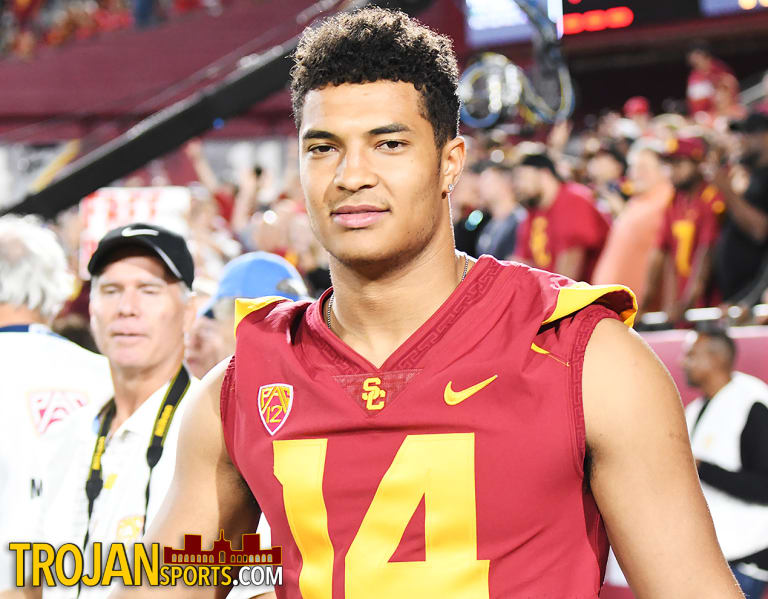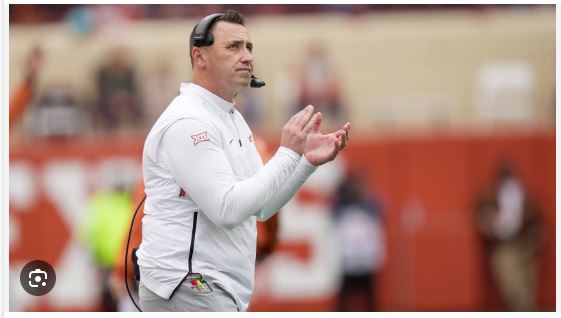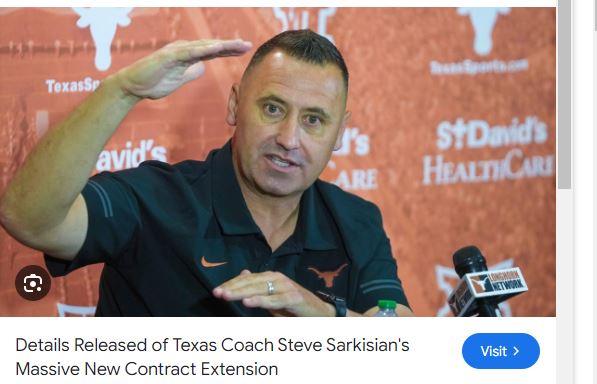Since the launch of the college football transfer portal in 2018, no one has been spared heartache, and the Texas Longhorns are no exception.
The Horns have lost 101 players to the portal in the previous six years, mostly as a result of the program’s many changes in head coaches.
Which 10 sportsmen, out of those who have departed Austin, have caused Texas fans the most amount of grief?
five-star wide receiver Bru McCoy to USC
Utah’s Cameron Rising, a three-star quarterback
Although neither Cam Rising nor Bru McCoy played a snap for the Longhorns, they were huge commitments to Texas and had been highly recruited out of high school.
Both McCoy and Rising were significant losses for the Horns when they went via the transfer portal. They were both anticipated to succeed greatly in college, as they subsequently demonstrated.
Rising completed his trip to Utah with 5,572 throwing yards and 46 touchdowns. Before moving to Tennessee, McCoy played for the Trojans for just one season after transferring to USC. As of right now, his status on the Vols’ 2024 roster is active.
With the passing of the Spring transfer portal window, the Texas football team’s 2024 roster is almost complete.
The portal cost the Longhorns 25 players, but head coach Steve Sarkisian signed 10 players, eight of whom were Power Four players, after setting clear goals for himself. Throughout the whole cycle, Hook’Em Headlines has reported on Texas’s transfer portal activities. It’s time to examine the present roster and project how things will fit together in August.
Last season, there were disagreements over the Texas secondary. The throwing yards per game allowed by the Horns were 254.4, which ranked 105th nationally and fourth worst in the Big 12.
Michael Penix Jr. scorched the Texas secondary for 430 yards on 11.3 YPA in their Sugar Bowl defeat to Washington.
When everything is taken into account, it is reasonable to say that the Longhorns’ secondary was the only thing preventing them from winning a national championship.
As part of his early efforts to increase the stability of the backend through the high school rankings, Coach Sarkisian recognized this issue. In their 2024 high school recruiting class, Texas recruited five secondary players, including two Top 50 prospects, Xavier Filsaime of McKinney, Texas, and Kobe Black of Waco Connally, Texas.
The future of the position was secured by adding high school talent, but the coaches realized they needed to bring in some quick impact veterans from the portal.
Freshman All-American Andrew Mukaba was added to the team from Clemson in January 2021. 2023 San Jose State prospect Jay’Vion Cole committed to the Longhorns last week.
The Longhorns get two elite backup players in Mukuba and Cole, who will compete for key snaps this autumn.
Having said that, the gateway takes just as much as it gives.
Eight were from the secondary out of the 25 players Texas football lost to the portal this year. It was obvious to upperclassmen like Kitan Crawford and Jerrin Thompson that younger, more skilled players would soon be vying for their positions.

B.J. Allen Jr., Xavion Brice, and Larry Turner-Gooden were among the underclassmen who never realized their full potential on the Forty and did not perceive a route to playing time.
Terrance Brooks, a rising junior, was one departing secondary transfer who hurt, though.
In his two seasons in Austin, Brooks started 16 games and was expected to start at field cornerback this autumn. The Little Elm, Texas, native was a tough ballhawk who tied for the team lead in interceptions last season despite having his fair share of mishandled coverages.
Let’s examine how the Longhorns will replace Brooks and what the lineup looks like in the secondary come summertime.
I’ve arranged the guys by year because the Longhorns cross-train a lot in the secondary. I’ll go into further detail about each of their roles below.
Graduates: Gavin Holmes and Jahdae Barron
Michael Taaffe and Andrew Mukuba, seniors
Junior: Jaylon Guilbeau, Jay’Vion Cole
Derek Williams, Malik Muhammad, and Jelani McDonald are sophomores.
Jordan Johnson-Rubell, Xavier Filsaime, Kobe Black, Wardell Mack, Warren Roberson, and Santana Wilson are the freshmen.
The Longhorns have seen an almost constant turnover of coordinators, assistant coaches, and head coaches during the last ten years.
Three offensive coordinators have come and gone from Texas’ locker room since 2014, with differing degrees of success—or failure.
The Horns have finished 73-53 overall over the past ten years while averaging only 404.4 points each season.
Having joined the Longhorns in 2021, Kyle Flood has been the offensive coordinator for Texas for the longest period of time—more than any other person in the past ten years.
Which coaching strategies do Flood employ in comparison to the four other coordinators that have “graced” DKR’s hallways as he gets his offensive unit ready for the SEC?
Prior to Shawn Watson’s final two games, which saw the Horns score a decisive three points in one and gain a total of 59 yards in the other, the offensive coordinator of the team consistently performed poorly.



